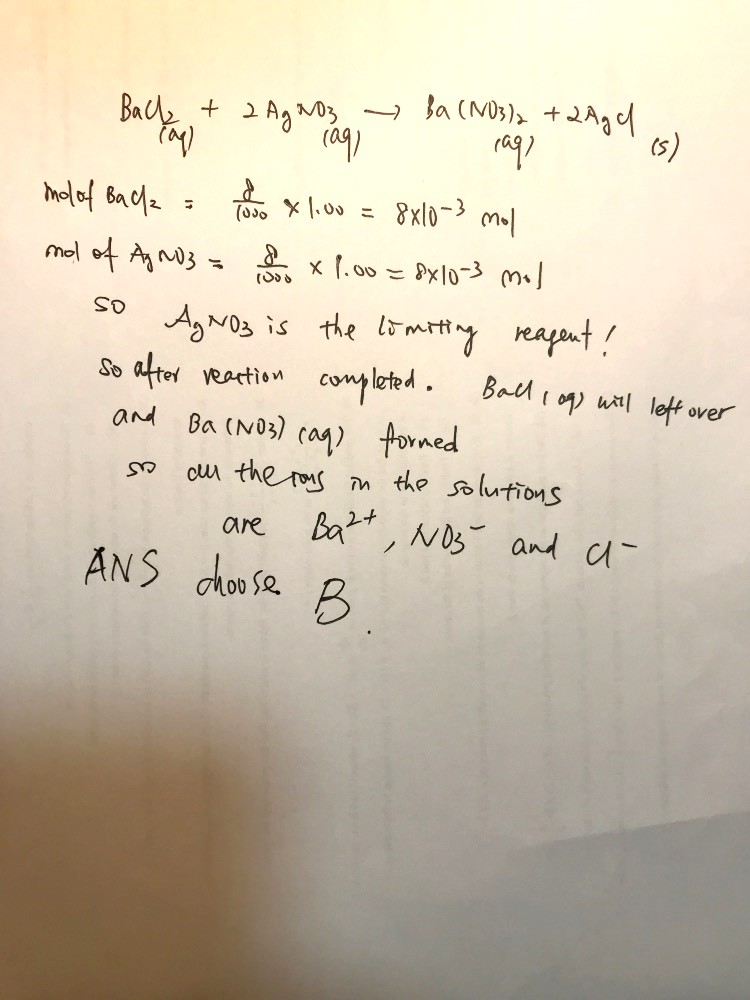Ask Singapore Homework?
Upload a photo of a Singapore homework and someone will email you the solution for free.

Question
secondary 4 | E Maths
One Answer Below
Anyone can contribute an answer, even non-tutors.

Why is ans B? Why is cl minus ions found?
I tot agcl cannot even dissolve in water, how is it able to further disociate into ions?
Will help you later if I have time, but currently I am stuck in a series of classes until 10 pm+.
Give you a clue first: write the balanced equation and perform mole ratio calculations.
Mole ratio of BaCl2 : AgNO3 is 1 : 2.
Mole ratio of BaCl2 to AgNO3 is 1 : 2. Thus means that for every 1 mol of BaCl2 reacted, we need 2 mol of AgNO3.
8 cm3 of a 1 mol/dm3 solution provides 0.008 mol, or 8 milli mole, of the solution.
Basically,
- 8 mmol BaCl2 requires 16 mmol AgNO3,
- 8 mmol AgNO3 requires 4 mmol BaCl2
So it’s clear that when all 8 mmol AgNO3 is reacted, only 4 mmol BaCl2 has been reacted, meaning that there is still 4 mmol unreacted BaCl2.
The final mixture contains 4 mmol BaCl2, 4 mmol Ba(NO3)2 and 8 mmol solid AgCl by the mole ratio.
So, only BaCl2 and Ba(NO3)2 will generate ions.
See 1 Answer
Dr Lee - O level maths and chem tutor
If want to join my effective tuition class, whatsapp 87168962. Thanks.





